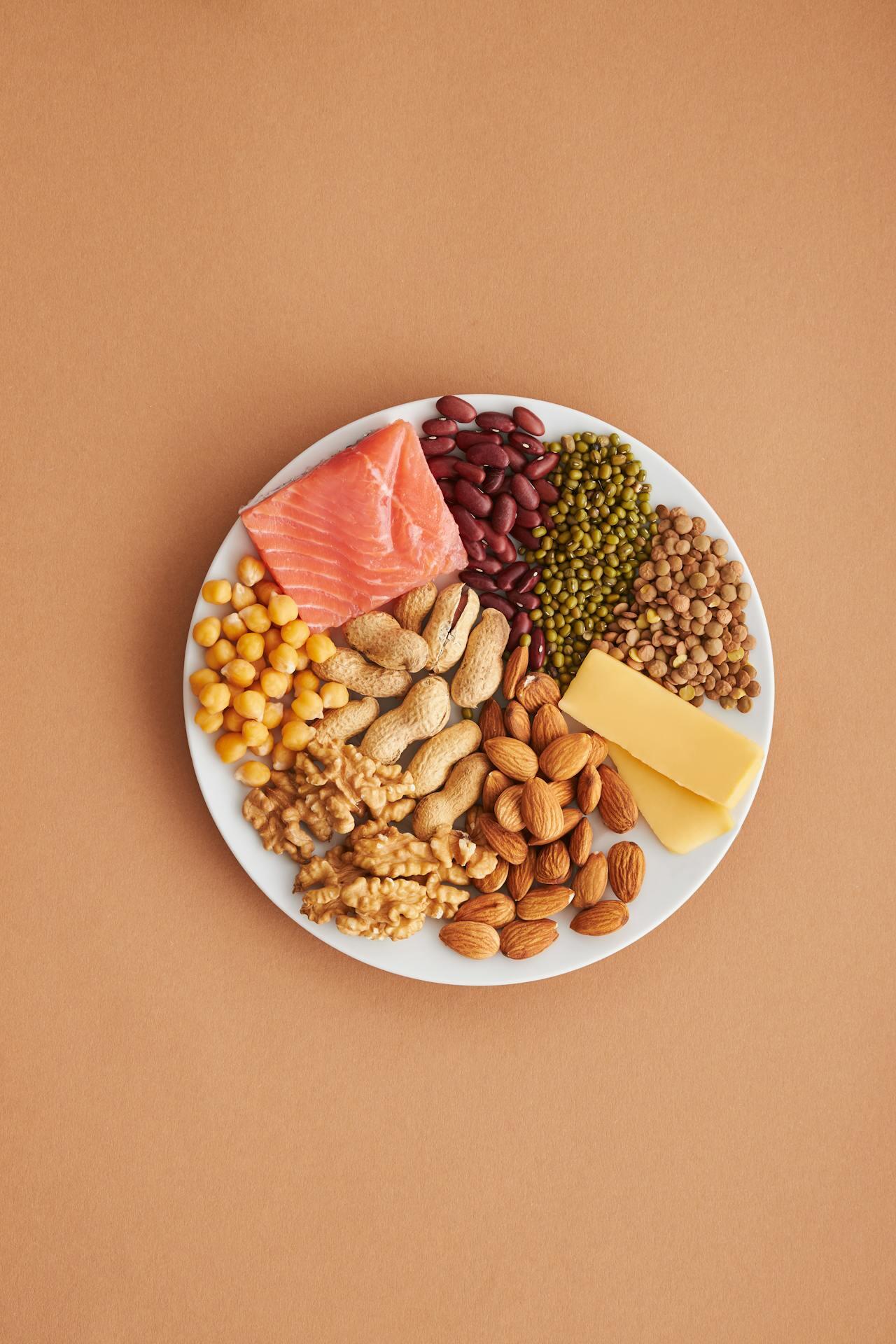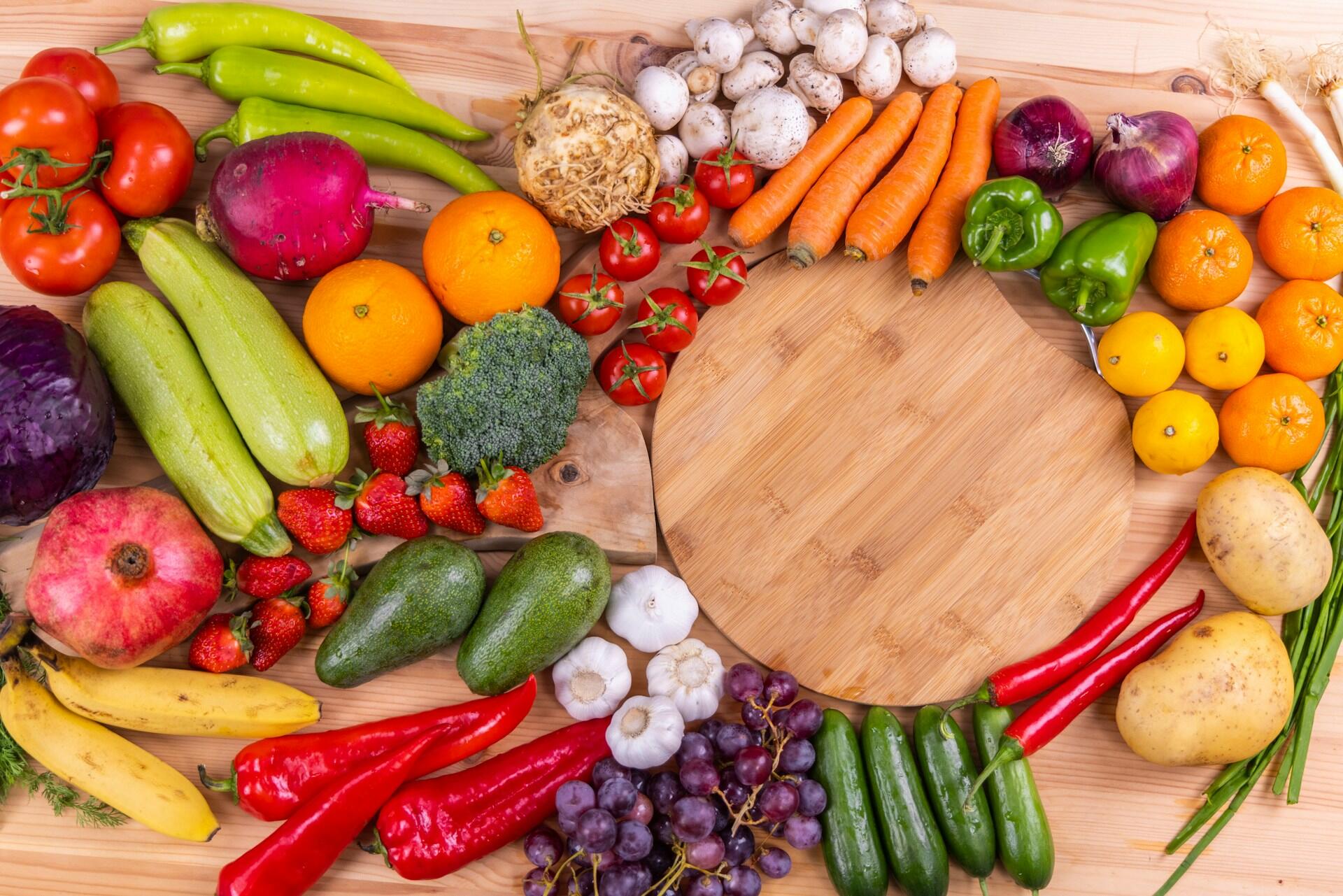Proper nutrition is one of the most fundamental things on which anyone’s healthy and happy life can be based.
Sahara Sanders
A balanced diet is considered an excellent requirement for healthy living. But, with all kinds of nutrition information on the internet and new products showing up on the food shelves every day, it is easy to get confused.
We are constantly bombarded with the latest diet or superfood, and the nutrition we require for our bodies to function at their best seems to change with the latest trend. Here is a breakdown of the roles of the five primary food groups and how they serve as a simple basis for healthy living.

🍚 The Role of Carbohydrates
Carbohydrates are essential in helping our bodies to function and release energy efficiently, playing a significant role to fuel many of the metabolic processes in the body. That being said, carbohydrates can be classified into two categories depending on their chemical structure and how quickly they are digested; simple carbohydrates and complex carbohydrates.
Simple carbohydrates
- Contains one or two types of sugar
- Terms: Monosaccharides and disaccharides
- Quickly broken down and absorbed in the body
- Examples: Fructose (found in fruits), Galactose (found in milk)
Complex carbohydrates
- Contains three or more types of sugar
- Term: Polysaccharides
- Has a slower digestion rate than simple carbohydrates
- Examples: Starch (found in potatoes), Cellulose (found in nuts)
Whenever you take in a diet containing carbohydrates, it is ultimately broken down into glucose. This is the form in which the body can utilize it to generate energy for running the body. However, if the glucose is not immediately needed, it is converted to glycogen, a kind of energy store that the body can use later.

As energy is needed to run the body, insufficient intake of carbohydrates will lead to spells of dizziness, physical weakness and reduction in mental alertness. This is because the central nervous system does not have access to enough energy to keep it running.
In the same vein, more intake of carbohydrates than needed by the body will cause it to be converted to fat. Increased fat may lead to cases like obesity and heart problems due to high cholesterol levels. Despite this, carbohydrates have received a bad rap in recent years. Low-carb diets focus on cutting down or completely removing this food group from our diets, but this often means that our bodies become sluggish and we end up having very little energy throughout the day.
According to the National Institutes of Health, the recommended daily amount of carbohydrates for an adult is 135 grams. However, this may be lower or higher, depending on your energy needs. It is, however, advised that persons with diabetes should not eat more than 200 grams of carbohydrates per day.
🥚 The Role of Proteins
Proteins are complex, high molecular weight organic compounds that are essential and involved in virtually all cellular functions. Such is their importance that they are often referred to as "the building blocks of life"
Proteins come in two forms; the complete proteins that contain all eight amino acids that our bodies cannot produce on their own (essential amino acids) and the incomplete proteins that lack or have only a small proportion of one or more of these amino acids.
A deficiency of protein in the diet (all eight essential amino acids) can lead to problems like loss of muscle mass, hair loss and fatigue. Acquiring all the needed amino acids can be achieved by merely mixing foods that are rich in the different amino acids. Let's review the three major functions of proteins:
📌 Body tissue maintenance & repair
📌 Production of different enzymes
📌 Formation of antibodies
But what happens in the case of excess protein intake?
This could be potentially dangerous as well with consequences ranging from an overreaction of the immune system to liver dysfunction due to increased toxic residues. This is why the recommended daily allowance for protein is pegged at a value of 0.8grams of proteins per kilogram of body weight.
The Eatwell Guide highlights a mixture of options in this food group that provides different sources of protein including fish, eggs, beans and pulses, and meat. The Guide advises to ‘eat more beans and pulses, 2 portions of sustainably sourced fish per week, one of which is oily’ and ‘eat less red and processed meat.’
Alternatively, as research has developed in the last 10 years outlining the dangers of consuming too much meat and fish, there are huge health benefits to eating plant-based sources of protein, which can prevent serious illnesses, such as heart disease and stroke.

🧈 The Role of Fats
Fats are made up of several fatty acids that are bound to glycerol. Fats are contained in the foods we eat and provide energy to meet the body's calorie demands. They are the primary source of energy in the body and can produce up to two times the energy released by either carbohydrates or proteins.
There are two main types of fats found in the food we eat. These are: saturated fats and unsaturated fats.
Fats are an essential part of a healthy diet because they are a source of essential fatty acids, which the body cannot make on its own. They also help the body to absorb vitamin A, vitamin E and vitamin B. However, the intake of too much fat or the wrong type of fats can be unhealthy for the body.
On the other hand, deficiency of the essential fatty acids found in fats will result in increased susceptibility to infections, poor wound healing and decreased growth.
Saturated fat composition of 10% or less.

🍓 The Role of Vitamins and Minerals
Vitamins and minerals are known as micronutrients, which means they are needed in a moderate amount to facilitate a wide range of metabolic processes in our bodies. Without vitamins and minerals, your body will not be able to absorb carbohydrates, proteins, and fats to produce energy. Think of them like a power generator. Now, let's review some of the most important vitamins and minerals that we need to consume in our daily diet.
Vitamin A, Vitamin B, Vitamin C, Vitamin D, Vitamin E, Vitamin K
Calcium, Iodine, Zinc, Magnesium, Sodium, Iron, Potassium
Fruits and vegetables contain the most diverse range of vitamins and minerals. That's why sticking to a diet rich in fruit and vegetables will help the body thrive. Fruits and vegetables also keep the immune system strong, helping to protect the body from illness and disease.
Not having enough fruit and vegetables in your diet can come with dire repercussions. These include scurvy from the deficiency of vitamin C, night blindness caused by vitamin A deficiency or bleeding disorders from a vitamin K deficiency. On the system level, there is a higher chance of heart disease and digestive problems.

💧 The Role of Water
Out of the many beverages available, Canada’s Food Guide identifies water as the drink of choice for maintaining optimal health. After all, water’s primary role is to quench thirst and provide instant hydration for the entire body. Best of all, it’s the only food or drink that contains zero calories!
According to the latest statistics released by the Academy of Nutrition and Dietetics, the recommended fluid intake is 12.5 cups and 9 cups for men and women, respectively. That's how much water our bodies need to maintain a healthy metabolism rate, especially as our bodies lose water through three primary natural processes:
👉 Breathing
👉 Sweating
👉 Urinating
Water is found in many different types of food, ranging from vegetables, fruits, and even dairy products such as milk, yogurt, and cheese. So, apart from drinking plain water, it's essential to consume food with high water content on a regular basis to ensure sufficient water in your body to regulate body temperature, ensure smooth bloodstream flow to all parts of the body, and help to promote digestion.
Important tip: It's best to avoid overconsumption of sugary drinks, especially when you are tempted to add some flavour to your diet. Some examples include: Sweetened soft drinks, flavoured energy and sports drinks, and sweetened fruit juice.
🍽️ Canada's Evolving Food Guide
Since its inception in 1942, the Canada Food Guide has acted as the main source of healthy eating guidance for Canadians aged 2 and above, especially in terms of of enhancing nutritional health and wellbeing (knowledge-wise and practical-wise), helping Canadians understand and meet their optimum nutritional needs from various foods, and enabling Canadians to minimize any risk of diseases caused by their dietary habits.
📍 Historical Perspective
Let's look at the evolution of Canada's Food Guide over the years until 2007 before the latest update in 2019.
1942
The inception and introduction of Canada's First Food Guide: Official Food Rules. Six food groups were introduced: Milk, Fruit, Vegetables, Cereals and Breads, Meat, Fish, and Eggs
1944
The guide was renamed to Canada's Food Rules.
1961
The guide was revised and renamed to Canada's Food Guide, a signal to introduce a broader and more flexible nutritional approach through the integration of various foods.
1977
The official reduction of food group categorisation from five to four, as fruits and vegetables are now combined under one group.
1992
Another renaming of the guide took place. The guide is now known as Canada's Food Guide to Healthy Eating, with the introduction of the rainbow graphic instead of a pie graphic.
2007
Expansion of the guide to reflect the multicultural population of Canada, with more inclusion of specific nutritional guides for Canadians of different age groups and sex groups
📍 The 2019 Update
Finally, let's look at the latest update that took place in 2019. Under Health Canada, the latest Food Guide has now been revamped to use a plate model as its main visual guide and also a shift of emphasis of food groups into serving sizes, with the inclusion of 1/2 plate of vegetables and fruits, 1/4 of protein, and 1/4 of whole grain foods. And not forgetting, water is the first choice of beverage!
Additionally, the 2019 Food Guide also included very direct and practical healthy eating habits, such as the following:
☕What Food Group is Coffee In?
The Coffee Association of Canada recently released some data on the overall coffee consumption among Canadians in 2024. Firstly, it was reported that about 74% of Canadians have drank coffee the day before, and secondly, there has been an increased popularity of cold coffee beverages. Iced Americano, anyone?
Canadians sure love a good cup of coffee, so exactly what food group is coffee in under the latest Food Guide?

Coffee is now categorised under a group called non-fortified plant-based beverages (that are not a source of protein) under the main umbrella of beverages.
✅Plain Coffee
✅Tea
✅Vitamin and Flavoured waters
✅Club Soda
✅Juice drinks/cocktails
✅Artificially sweetened beverages
✅Sodas
🚀Expand Your Knowledge in Food and Nutrition with Superprof
Now that you have reviewed the various roles of different food groups in Canada, you might want to take this interest to the next level by taking a specialised nutrition course with a professional and experienced tutor. At Superprof, you can connect with a qualified nutrition tutor from different parts of Canada, whether you're based in Edmonton, Montreal, or Ottawa.
Just head to the Superprof Canada homepage to start browsing a wide selection of nutrition tutors to start learning and mastering various aspects of health and nutrition. Your body will thank you!






















